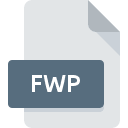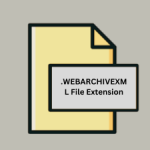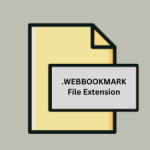.FWP File Extension

What is an FWP file?
The .FWP file extension is associated with Microsoft Expression Web, a discontinued web design and development software suite.
Specifically, it pertains to the “Microsoft Expression Web Package” file, which is used for bundling web assets in a project.
This article delves into the .FWP file’s origins, history, technical specifications, and practical aspects, including how to open and convert these files.
More Information.
Expression Web was introduced to address the growing need for advanced web development tools that supported standards-compliant HTML, CSS, and JavaScript.
The .FWP file format was designed to facilitate the management of complex web projects by bundling multiple resources into a single file.
This functionality was particularly useful for web developers and designers working on large-scale projects, enabling easier organization and distribution of web content.
The .FWP file format was primarily used in Expression Web versions 1 through 4, which were released between 2006 and 2010.
Microsoft discontinued the Expression Studio suite in 2012, but during its lifespan, the .FWP format was widely used for creating and managing web packages.
Origin Of This File.
The .FWP file format originated from Microsoft’s Expression Web suite, a set of web design and development tools designed to help users create, manage, and maintain websites.
Microsoft launched Expression Web in 2006 as part of the Expression Studio suite, which also included tools like Expression Blend and Expression Design.
The .FWP files were integral to the Expression Web environment, serving as containers for web packages.
File Structure Technical Specification.
A .FWP file is essentially a compressed archive file that contains various components of a web project.
Its structure is similar to other archive formats like ZIP files, which means it can encapsulate multiple files and directories. Inside a .FWP file, you might find:
- HTML Files: Core structure of the web pages.
- CSS Files: Styling information.
- JavaScript Files: Client-side scripting.
- Images: Visual assets like JPEGs, PNGs, and GIFs.
- Other Resources: Such as XML files, fonts, and multimedia elements.
Technically, a .FWP file is a proprietary format used by Microsoft Expression Web. It encapsulates these resources in a manner that allows Expression Web to manage and process them effectively. This encapsulation facilitates the organization of files and makes it easier to transfer and deploy web projects.
How to Convert the File?
Converting .FWP files can be challenging due to their proprietary nature. Here are some methods to handle conversion:
- Extract Contents: Since .FWP files are essentially compressed archives, you can use archive extraction tools like WinRAR or 7-Zip to extract the contents. This will allow you to access individual files within the .FWP package. Once extracted, you can manually convert these files into other formats if needed.
- Use Microsoft Expression Web: The most straightforward way to work with .FWP files is to use the Expression Web software itself. If you have access to an old version of Expression Web, you can open the .FWP file, make any necessary changes, and then export or save the project in a more universally supported format like HTML or ZIP.
- Third-Party Conversion Tools: There are limited third-party tools designed to handle .FWP files. Some tools might claim to convert .FWP files into other formats, but their reliability and effectiveness can vary. It’s important to research and test these tools carefully.
Advantages And Disadvantages.
Advantages:
- Organization: By bundling related files into a single .FWP package, developers can keep their projects organized and ensure all related assets are together.
- Ease of Transfer: The .FWP format simplifies the transfer of web projects between different systems or users, as it consolidates all necessary files into one archive.
- Project Management: Expression Web’s built-in tools make it easy to manage and edit the contents of .FWP files, streamlining the web development workflow.
Disadvantages:
- Proprietary Format: The .FWP file format is specific to Microsoft Expression Web, limiting its compatibility with other tools and platforms.
- Obsolescence: With the discontinuation of Expression Web, the .FWP format is no longer actively supported or developed, making it less relevant for modern web development.
- Limited Support: Modern development tools and environments do not natively support .FWP files, which can be problematic for users who need to access or convert these files.
How to Open FWP?
Open In Windows
- Microsoft Expression Web: The primary method for opening .FWP files on Windows is to use Microsoft Expression Web. If you have an older version of this software, it should handle .FWP files natively.
- Archive Extraction Tools: If you don’t have Expression Web, you can use tools like WinRAR or 7-Zip to extract the contents of the .FWP file. Once extracted, you can work with individual files in their respective formats.
Open In Linux
- Archive Extraction Tools: Linux users can use tools like File Roller or PeaZip to extract the contents of .FWP files. As with other operating systems, you will need additional software to work with the individual components.
- Windows Emulators: Similar to MacOS, you can use a Windows emulator or virtual machine to run Expression Web and open .FWP files.
Open In MAC
- Archive Extraction Tools: MacOS users can use applications like The Unarchiver or Keka to extract .FWP files. However, without Expression Web, you will only have access to the individual components of the file and not the project as a whole.
- Virtual Machines or Emulators: If necessary, you can use a virtual machine running Windows to install and run Microsoft Expression Web, allowing you to open and manage .FWP files.













